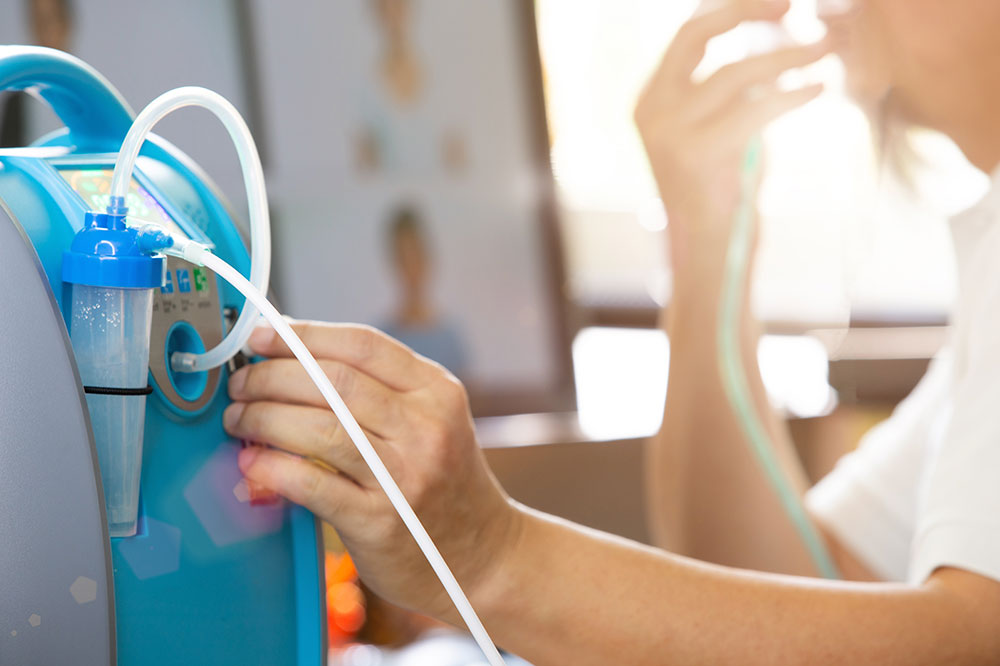10 Ways Portable Oxygen Concentrators Make Life Easier

Portable oxygen concentrators are devices designed to assist patients with respiratory conditions or other ailments that cause breathing difficulty. They help individuals breathe without straining their lungs or adding pressure to their brains. The most significant benefit is that portable concentrators do not have to be refilled frequently and can be charged anytime, anywhere. They filter the surrounding air and collect concentrated oxygen, which is delivered to the patient through a nozzle.
Convenience of use
There are different kinds of portable oxygen concentrators, each with a unique functioning system. But irrespective of the type, these portable devices are convenient and easy to carry around without impacting day-to-day life. Given the wide range of choices, the canned oxygen concentrator is a suitable pick among the ones that are the easiest to use. It requires just one attachment to connect the nose and mouth mask to the spray nozzle. If one has been advised oxygen therapy and needs to monitor their oxygen intake, they can add a portable oxygen concentrator control panel to the setup. These panels track the pulse and oxygen flow and inform the user if something is wrong. Control panels also show the battery life of the concentrators, reminding the person to have a backup at hand. This is a valuable feature worth investing in.
Lifestyle maintenance
Many people with respiratory or other disorders requiring supplemental oxygen have restricted lifestyles. But thanks to portable oxygen concentrators, that can easily be remedied. The compact structure of these devices prevents individuals from limiting their movement and giving up on their active social or work life. Most tanks also come with AC/DC adapters, making it easy to recharge the machine quickly and easily whenever needed, thus saving time.
Better sleep
Those with respiratory issues usually find it hard to get quality sleep because of the lack of oxygen supply caused by their breathing difficulty. Sometimes, lower oxygen concentrations in the body and sleep problems impact a person’s overall health and the functioning of major organs. This is why portable oxygen concentrators are essential in improving one’s quality of life. They are a constant source of oxygen for patients with respiratory ailments, improving their sleep and health.
Flexibility
Portable concentrators are compact and convenient enough to be lugged around without hassle. They are also discreet as opposed to being hooked to a huge machine. This helps decrease patients’ awkwardness and reluctance to use them outside their homes. Users concerned about other people and their judgment can use these little tanks that do not grab attention. In other words, these compact devices enable patients to chase their goals and follow a routine without hindering them or wedging a wall between them and their regular life.
Mobility
The ease with which portable concentrators can be carried around makes them comfortable for patients of all ages. This also means patients across all walks of life can safely use them. For instance, those enthusiastic about sports or other activities can actively participate without sacrificing their dreams. These concentrators can be conveniently wheeled around when playing on a sports ground. Patients who do not want to wheel the device around can simply carry it in a backpack and avoid unwanted attention.
Customization
Portable oxygen concentrators are not set at a single operation speed. It is possible to adjust the flow speed according to the user’s need or as advised by their doctor. These devices are also available in different sizes to suit the preferences of the patients that need to use them. Individuals can choose designs that work best for their routine and other requirements.
Safety
Traditional oxygen tanks can be a considerable fire hazard since they may develop a leak. Portable concentrators, on the other hand, are relatively safer. One reason they are a lower potential risk is the lower amount of oxygen they carry.
Better organ function
Better oxygen flow to the brain can lower the possibility of brain fog and improve a person’s brain and bodily function. Further, the improved oxygen supply to the lungs helps increase the organ’s oxygen-carrying capacity and pass it on to the rest of the respiratory system and blood. Owing to the higher oxygen concentration in the blood, the organs in different body areas can function correctly.
Reliable treatment
Oxygen concentrators have proven beneficial for patients with several respiratory ailments like asthma and COPD. Those with COPD may frequently require concentrators to combat the lack of proper oxygen supply in the body. Portable machines save patients from the inconvenience of using bulky oxygen tanks and encourage them to step out of the house more often without embarrassment.
Easy travel
Traveling with oxygen tanks is restrictive and exhausting. And catching a flight with one proves an absolute nightmare. But this is unavoidable because the lower oxygen in an aircraft cabin is a cause of concern for patients with respiratory illnesses. Thankfully, a portable oxygen concentrator can be carried on flights with some paperwork. Users may be able to check it in with their luggage, carry it in a backpack, or sit down with it.
Despite knowing how portable oxygen concentrators can help improve a patient’s quality of life, their higher cost might worry some. Those trying to determine the minimum amount they will have to invest in getting a good concentrator may be surprised to hear its price. As per estimates, the minimum cost is around $2,000. However, the exact figure will depend on the size, type, company, and the concentrator’s capacity. Individuals can rent these devices if the cost seems too much. Renting eliminates the worry about the purchase price and whether or not the machine will be helpful long term. In any case, it is crucial to research these machines and compare them to purchase or rent the right one.






